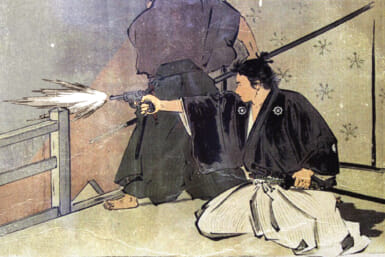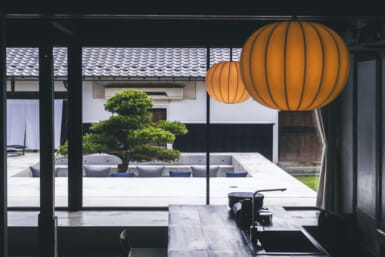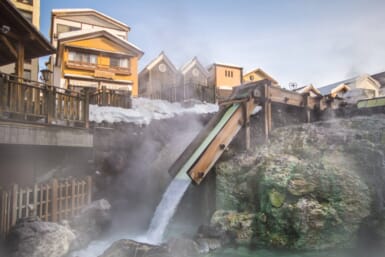On Dec. 5, 1996, after lighting the National Christmas Ttee in Washington, D.C., President William Jefferson Clinton told the assembled throng: “America’s Christmas tree is famous all over the world. Believe it or not, there’s even a new movie in Japan about two people who came to Washington and fell in love under this Christmas tree.”
Hillary Clinton was at Bill’s side as he made these remarks, and if this had been one of those rare occasions when the two actually deigned to speak to each other, one can imagine she would have told him: “Yes, dear, it is indeed true that the conclusion of the film you refer to does take place under the National Christmas Tree, or rather a sound-stage recreation of it that is as hallowingly fake as our marriage. However, I think you should point out that most of the film is set in the largest city of what will become, four years from now, my home state of New York.”
Is there a major American metropolitan area that is more gorgeously romantic at Christmas time than NYC? The Apple is certainly the pomme of mes yeux, for it was here, during the Yule season about a dozen years ago, in a room at the Waldorf-Astoria, that the Missus and I conceived our first child.
Throughout the years, Japanese filmmakers have also been drawn to New York City, sometimes in the winter, sometimes in the fall, summer or spring, but almost never at a time when they felt like showing Gotham in a favorable light. You will discover, upon visiting your favorite video rental outlet, that all the best stuff has already been checked out. Rather than despairing, use this opportunity to see NYC through the eyes of some of Japan’s most gifted filmmakers:
In 1980’s Kiri no Manhattan (“Manhattan Fog”), Ichiro comes to the city in search of Ryoko, the missing freelance photographer daughter of one of his university professors. Ryoko is presumed to be somewhere in Harlem, photographing prostitutes, drunks and down-and-outers, and living with Willie, a black drug dealer and, it is suggested, a “homo.”
A woman named Linda guides Ichiro above 110th Street, but is not optimistic about successfully concluding the search: “There are so many black people,” she marvels, “I don’t know how we’re going to find (Willie).” Amazingly, Ichiro does find Ryoko and Willie, and stabs the latter to death in self-defense. “My mother was an angel,” says the putative homo before expiring, “I always wanted to kill my father.”
The following year, 1981, saw the release of the 18 th and final installment in Toho’s Waka Daisho (“Young Champ”) series. In Kaette Kita Waka Daisho (“The Return of Young Champ”), Young Champ must beat an American government official in the New York City Marathon for a reason too incredible to relate here.
Suffice it to say he not only triumphs in the marathon, but also he once again rescues his lovable sidekick, Ao Daisho (Kunio Tanaka), from a potentially embarrassing scrape, causing the comic bumbler tearfully to express the affection he has long had for his friend. “You know,” says Ao Daisho as he embraces Waka Daisho, “now I can understand why America has so many homos.”
Guddo Rakku Love (“Good Luck Love,” 1982) finds Ryoji (Toshihiko Tahara) studying dance at a school where a staffer complains “You can’t trust Japs,” and running into an elderly black gentleman in Washington Square who tells him that he used to play the trumpet until the death of his son in Vietnam caused him to sell his instrument “to buy drink.” He also prevents a gang of hoods from mugging a Japanese hat designer, but before he can initiate a romance with the young woman, she is fatally struck by a taxi at the Plaza Hotel.
Another instance of vehicular manslaughter provides an excuse for the star of the ’86 release, Cheekazu/Song for U.S.A. to go to the Apple. Fumiya, lead vocalist for the Cheekazu (a.k.a. Checkers), strikes up a friendship with P.J. Miles, a hard-drinking black musician whose wife abandoned him and their daughter to marry a wealthy white man. (“That often happens in America,” says Fumiya’s manager).
When P.J. is run over and killed, Fujiya accompanies the man’s body all the way to a funeral service in Harlem, where the tearfully repentant ex-wife of the deceased declares, “I know God hasn’t forgiven me, but I had to come,” and then entertains the mourners with a rendition of “Crying in the Chapel.”
The titular heroine of ’95’s Kyoko goes to New York in search of Jose, the Cuban-American G.I. who, years ago, taught her Latin dancing. Alas, Jose has an advanced case of AIDS and can’t remember her. Kyoko also can’t remember ever seeing an AIDS victim back in Japan, where, of course, there are no “homos.”
In Daitoryo no Kurisumasu Tsurii (“The President’s Christmas Tree”), the ’96 release that earned the enthusiastic thumbs up from America’s chief executive, a young woman named Kirari asks a guy named Benito to take her up to Spanish Harlem to find her saxophone-playing brother, Haruki. Rather than taking the A-or any other-train, Benito drives Kirari to her desired destination in a pick-up truck, the favored vehicle of all New Yorkers, loading his handgun, he takes Kirari past various winos and psychos to an abandoned church, where she finds Haruki and a pianist playing le jazz cool in the early a.m.
Later, Haruki, depressed by various personal and professional setbacks, wanders down an alley, tosses the bottle from which he was drinking, and is immediately set upon by two dark-skinned males who not only beat him up, but instantly discern his nationality, one calling him a “F—– g Jap bastard.”
So, if you need an astringent cinematic chaser to cut the sweetness of all that peace on earth eggnog, take your pick of the above. Sure to be in stock.









